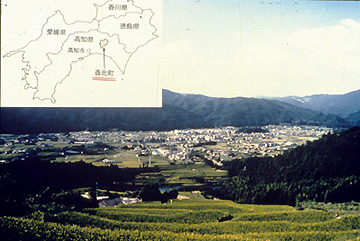| 3. Field Medicine on a Temporal Axis:Historical Changes in Aging “What has four legs in the morning, twoat noon and three at night?” This question is well known, as the Sphinx’sriddle. The Sphinx, a monster that appears in Greek mythology, sat on a rock atthe castle gate of Thebes, asking passers-by the riddle. If they answered incorrectly,the Sphinx killed them. Oedipus, the king of Thebes, walked by and gave theright answer, telling the Sphinx, “Humans in their infancy crawl on four limbs,walk on two feet when grown, and in old age, walk with a cane as a third leg. Inother words, the riddle describes the life of a human.” The Sphinx, admittingdefeat, threw itself from the rock to its death – or so goes the myth. There is no need for us to go back over 2,000 years to ancient Greeceto understand that as they become old and frail, people begin using a walkingstick and die out just like a dwindling candle flame. Until just a few decadesago, we accepted this as a natural law. But today, human life no longer ends in the evening. It is followed bya long, long night. Specifically, this is the night of being bedridden and/orin dementia. Bed-riddenstatus, dementia, the after-effects of strokes, and chronic ailments such asbone- and joint-related failures increase with age, and in many cases cannot becompletely cured. Chronic diseases are different from acute ones in that themajor problems for the patients involve not life or death but rather pain,disability, social handicaps, etc., problems that cannot be easily measured andthat can only be understood by the patients themselves. Even today, when highlydeveloped medical technology is available, only a few diagnostic tests canaccurately measure patients’ pain, disability and handicaps. What is importantfor the elderly in our aged society today is for this “disability” to be diagnosedand improved or prevented as much as possible. For the over pastten years, we have conducted geriatric follow-up studies of some 2,000 elderlypeople living in Kahoku Town, Kochi Prefecture. Through thestudy, we have been able to identify risk factors for future death in theelderly, and factors that can lead people to become bedridden. We weresuccessful in improving the ability of elderly people to be self-reliant intheir daily lives in the community, and also in curtailing the growth ofmedical expense through geriatric interventions into the community. The studyis also shedding light on how the elderly view life and death and what theiractual quality of life (QOL) is. We have nowexpanded our longitudinal follow-up study into Yogo Town, Shiga Prefecture,Sonobe Town, Kyoto Prefecture, Urausu Town, Hokkaido, and are tracking thelocal characteristics of the health situation of Japanese elderly people. Webelieve the comparison of area studies using the method of field medicineshould start from the elderly.
MATSUBAYASHI Kozo |
